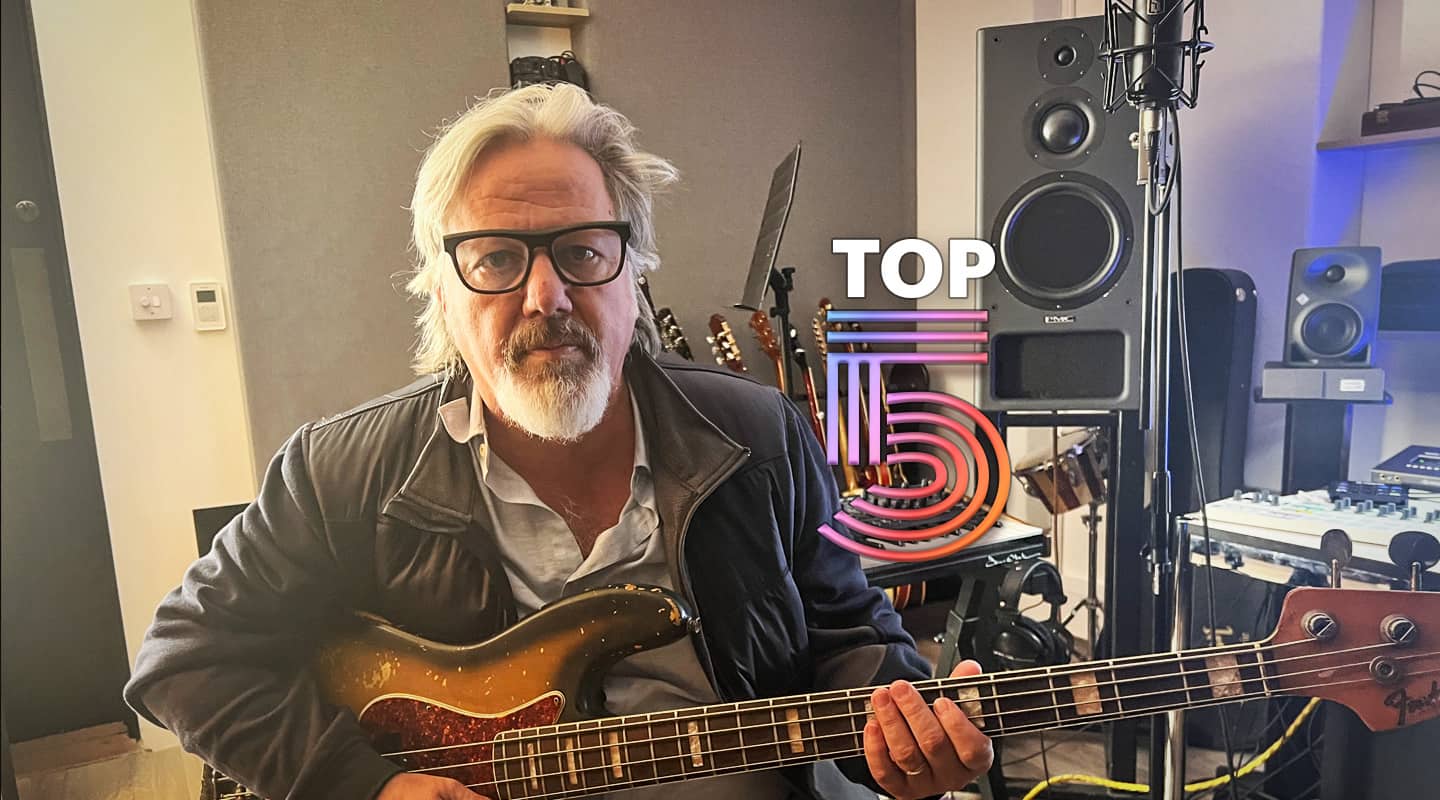
Top 5: Andy Wright
Since the mid-1980s, English producer, programmer and session musician Andy Wright has worked within a diverse range of genres and artists (Simple Minds, Simply Red, Eurythmics, Jeff Beck et al). Here are his five essential studio tools.
By Joe Matera
5 October 2022
IZOTOPE RX9 MUSIC REBALANCE
The Izotope RX series is most commonly used in post production, particularly in voiceover work. I often use it as my go -to de-esser and on occasions for breath control. However, I have found the ‘music rebalance’ plug is really useful; run off-line in Audio Suite. Rebalance is a really quirky piece of kit, where you can isolate four aspects of the track. It offers you four channels of separation, vocals, bass, percussion (including drums) and ‘other’ (ie., everything else!).
I have recently been using it as a creative tool. In a writing or song development situation [[[I often buy a whole selection of songs, often chosen randomly or by following a tenuous thread, and then dissect the contents]]] and find inspiration from classic artists, composers and record makers. I also occasionally take this a stage further and drop the resulting stems into Melodyne 5 and creating a MIDI file that might lead me somewhere other than the ordinary. It is important, of course, not to infringe copyright but since the dawn of time, creatives have sought to be inspired by their heroes.


OBERHEIM OB-6
As a young musician, I was lucky enough to find a job driving synths and drum machines to famous studios. I used to love the look of the old Oberheim OB-X and OB-Xa. They looked so professional and cool, and I hoped I would own one someday. Obviously, these synths have become both hard to find and unaffordable. However, I did recently buy the Dave Smith OB-6 and haven’t looked back. Unlike many of the original synths it is stable, holds its tuning and is highly versatile. While I have a good range of soft synths, I like having the OB-6 hooked up all the time and nine times out of 10 I will go to it, find a preset that I like and then edit it to suit the music I am making. I pretty much always commit sounds and performances to audio rather than keep them running live whilst hiding the original MIDI track in Pro Tools in case I want to relook at the sound or create a new part of the song with the original sound.
3. 1966 FENDER JAZZ BASS GUITAR


ARTURIA BEAT STEP
I realise that this may be a surprise entry, given it has the look and price tag of a piece of budget studio equipment. It is, however, a fabulous little machine and does exactly what I want it to do, ie., sequence drum sounds in a classic drum machine style. When I started programming drums, I had 24/7 access to a Linn Drum, which wasn’t mine but was rarely out of my sight. I still love that style of programming, running a small loop in 16ths and overdubbing in real time, and letting the machine auto quantise and dispose of double hit notes for you. I use this now in conjunction with NI Battery on Pro Tools. First, I make a preset of 16 sounds on Battery and then start to create a drum part on the Beat Step. When I’m happy, I output the sounds on Battery and record my drum sequence through to multitrack and start writing, hopefully, a hit!
ACUSTICA AUDIO EL REY COMPRESSOR
This is my go-to plug-in compressor. I have an original, outboard Urei 1176 and a Neve compressor but use these as part of my vocal chain if I need to. In the box though, this is, in my opinion, the best I have found. It is very easy to use with basic attack, release, input, threshold, make up and dry/wet knobs which suits me perfectly. There are a range of presets available as starting points with the likes of studio luminaries Greg Wells and Spike Stent putting their names to them, and with just a bit of modification it will have your vocals etc. sitting much better in your music.

















RESPONSES